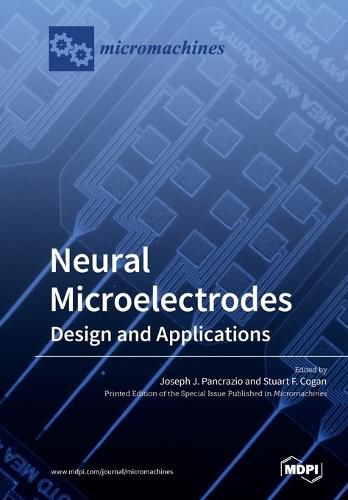Readings Newsletter
Become a Readings Member to make your shopping experience even easier.
Sign in or sign up for free!
You’re not far away from qualifying for FREE standard shipping within Australia
You’ve qualified for FREE standard shipping within Australia
The cart is loading…






This title is printed to order. This book may have been self-published. If so, we cannot guarantee the quality of the content. In the main most books will have gone through the editing process however some may not. We therefore suggest that you be aware of this before ordering this book. If in doubt check either the author or publisher’s details as we are unable to accept any returns unless they are faulty. Please contact us if you have any questions.
Neural electrodes enable the recording and stimulation of bioelectrical activity in the nervous system. This technology provides neuroscientists with the means to probe the functionality of neural circuitry in both health and disease. In addition, neural electrodes can deliver therapeutic stimulation for the relief of debilitating symptoms associated with neurological disorders such as Parkinson’s disease and may serve as the basis for the restoration of sensory perception through peripheral nerve and brain regions after disease or injury. Lastly, microscale neural electrodes recording signals associated with volitional movement in paralyzed individuals can be decoded for controlling external devices and prosthetic limbs or driving the stimulation of paralyzed muscles for functional movements. In spite of the promise of neural electrodes for a range of applications, chronic performance remains a goal for long-term basic science studies, as well as clinical applications. New perspectives and opportunities from fields including tissue biomechanics, materials science, and biological mechanisms of inflammation and neurodegeneration are critical to advances in neural electrode technology. This Special Issue will address the state-of-the-art knowledge and emerging opportunities for the development and demonstration of advanced neural electrodes.
$9.00 standard shipping within Australia
FREE standard shipping within Australia for orders over $100.00
Express & International shipping calculated at checkout
This title is printed to order. This book may have been self-published. If so, we cannot guarantee the quality of the content. In the main most books will have gone through the editing process however some may not. We therefore suggest that you be aware of this before ordering this book. If in doubt check either the author or publisher’s details as we are unable to accept any returns unless they are faulty. Please contact us if you have any questions.
Neural electrodes enable the recording and stimulation of bioelectrical activity in the nervous system. This technology provides neuroscientists with the means to probe the functionality of neural circuitry in both health and disease. In addition, neural electrodes can deliver therapeutic stimulation for the relief of debilitating symptoms associated with neurological disorders such as Parkinson’s disease and may serve as the basis for the restoration of sensory perception through peripheral nerve and brain regions after disease or injury. Lastly, microscale neural electrodes recording signals associated with volitional movement in paralyzed individuals can be decoded for controlling external devices and prosthetic limbs or driving the stimulation of paralyzed muscles for functional movements. In spite of the promise of neural electrodes for a range of applications, chronic performance remains a goal for long-term basic science studies, as well as clinical applications. New perspectives and opportunities from fields including tissue biomechanics, materials science, and biological mechanisms of inflammation and neurodegeneration are critical to advances in neural electrode technology. This Special Issue will address the state-of-the-art knowledge and emerging opportunities for the development and demonstration of advanced neural electrodes.